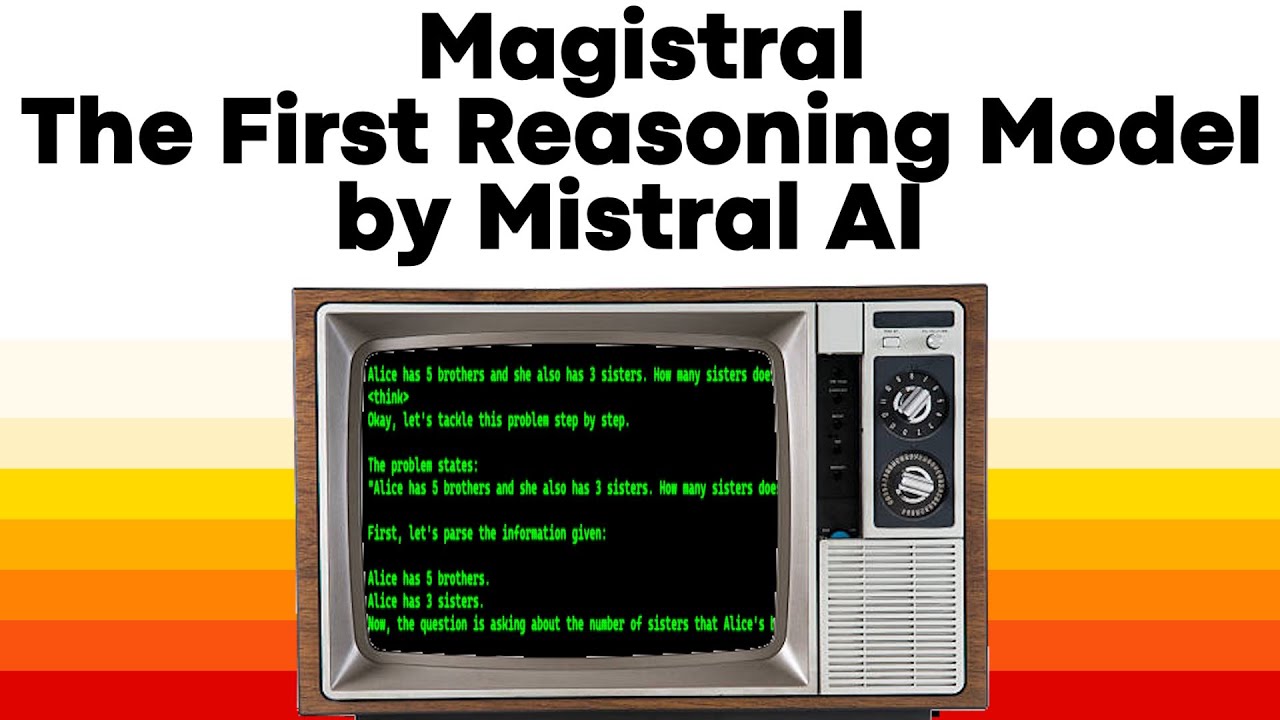The video introduces Mistral’s first large language model, Madistral, which can be run locally on high-end GPUs, showcasing its strong performance in reasoning, comprehension, and summarization tasks. However, it struggles with complex logical puzzles and programming, highlighting its strengths in natural language understanding but limitations in specialized technical tasks.
The video introduces Mistral’s latest development in European AI technology, highlighting the release of its first large language model called Madistral. This model is available in various sizes, with the smallest version being open weights, meaning it can be freely downloaded and run locally on a user’s hardware. The presenter demonstrates that the 24-billion-parameter model can be compressed to about 14 GB using quantization, making it feasible to run on high-end gaming GPUs like the RTX 3090 with 24 GB of VRAM. This local deployment capability is emphasized as a significant advantage, allowing users to operate the model entirely on their own PCs without relying on cloud services.
The presenter proceeds to test Madistral on a series of tasks using the Olama interface on a Linux PC. Initial tests involve reasoning and comprehension questions, such as family relationship puzzles and text analysis. The model performs well on these, providing correct answers after some processing time—around two minutes for complex reasoning. It also demonstrates capabilities in sentiment analysis, summarization, and answering logic questions about measuring time with hourglasses. These tests showcase the model’s ability to handle diverse natural language tasks effectively, albeit with some delays and occasional inaccuracies.
Further testing involves more complex reasoning, such as solving time measurement puzzles with different hourglass durations. While the model correctly solves some problems, it struggles with others, notably the challenge of measuring exactly 15 minutes using 7- and 11-minute timers. The model incorrectly states that it’s impossible, which the presenter points out as a weakness, especially since other online large language models can solve such puzzles. This inconsistency indicates that Madistral may have limitations in certain logical reasoning areas, a point that is reinforced by similar results from other models in the same family.
The video then explores the model’s programming and coding abilities. The presenter asks it to generate a Python program based on a detailed set of instructions, but the model fails to produce the correct code and overthinks the problem, leading to incorrect outputs. Attempts to get the model to write C code or detailed software specifications also fall short, with only partial ideas or snippets rather than complete implementations. The presenter notes that this weakness in programming tasks is somewhat expected, as other specialized models from Mistral are designed specifically for coding, but it remains a notable shortcoming for this general-purpose model.
In conclusion, the presenter summarizes that Madistral performs impressively across many natural language tasks, including reasoning, comprehension, and summarization, all running locally on a user’s GPU. However, it shows weaknesses in complex logical puzzles and programming tasks, which are areas where specialized models tend to excel. The overall message encourages viewers to try out Madistral themselves by installing it via Olama and running it on their own hardware, emphasizing the benefits of local AI deployment. The video ends with a call to action for viewers to experiment with the model and share their experiences.
